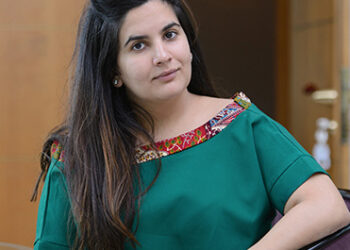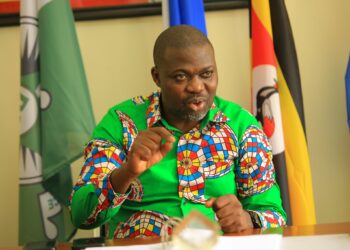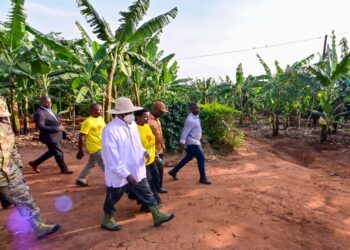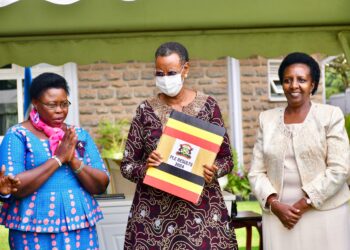By Najib Mulema
Uganda will on Monday, October 9th celebrate her 56th independence. As part of our Independence Day coverage, we bring you the gentlemen that have led this country since 1962.
From 1962 to 1963, the head of state under the Uganda Independence Act 1962 was the Queen of Uganda, Elizabeth II, who was also monarch of the other Commonwealth realms. The Queen was represented in Uganda by a governor-general. Uganda became a republic under the Constitution of 1963, when the monarch and governor-general were replaced by an executive president.
Under the 1963 Constitution of the Republic of Uganda, the president replaced the monarch as ceremonial head of state. The president was elected by the Parliament for a four-year term. In the event of a vacancy the prime minister served as acting president.
In 1966, the powers of the president were increased, with the establishment of the executive presidency, but the same rules applied concerning the vacancy of the president. It also applied to the 1967 and 1995 Constitutions.
Here are Uganda Presidents since 1962;
1. President Sir Edward Luwangula Walugembe Muteesa II (09 October 1963 – 02 March 1966)
Sir Edward Muteesa was the first post-independence President of Uganda. Muteesa was born at the house of Sir Albert Cook in Makindye, Kampala, on 19 November 1924, the fifth son of Sir Daudi Chwa II, Kabaka of Buganda, who reigned between 1897 and 1939. His mother was Lady Irene Drusilla Namaganda.
Under the country’s new constitution, the Kingdom of Buganda became a semi-autonomous part of a new Ugandan federation. Milton Obote became the Prime Minister. Obote later replaced Kabaka Mutesa as president in 1966.
Muteesa died of suspected alcohol poisoning in his London flat in 1969. Identified by the British police as suicide, the death has been viewed as assassination by agents of the Obote regime. Muteesa’s body was returned to Uganda in 1971 after the overthrow of Obote and given a state funeral at Kasubi Nabulagala.

2. President Apollo Milton Obote (15 April 1966 to 25 January 1971, 17 December 1980 to 27 July 1985)
He is the only President to have sat in State House on two different tenures; first in the 1966’s just after Independence and then from 1981-85 after Idi Amin. It was also to Milton Obote that the very symbolically important National Flag was handed at Independence Day on October 9th, 1962. On the other hand, Obote is held responsible for much of the political and military turmoil, which characterized Uganda in the early years after independence.
He was overthrown by Idi Amin on January 25, 1971, while attending a Common Wealth Conference in Singapore.

3. President Idi Amin Dada(25 January 1971 to 11 April 1979)
Field Marshal Idi Amin Dada was the third President of Independent Uganda.
There are different accounts about his place of birth. In some accounts, he claimed to have been born at the place where the International Conference Center (Serena Kampala Hotel) stands today. Others say he was born in Koboko to a Kakwa father and a Lugbara mother. His actual year of birth is not clear too. It is said that he was born between 1925 and 1928.
By the early 1970s, Amin had created a sizeable force within the Uganda Army that could answer to his whims and Obote recognized this too. A fall out started and finally, it culminated into the 1971 coup. At that time Obote wanted to arrest Idi Amin for various cases including murder. Then, Major General Amin however used his men to stop the move and was soon declared President while Obote was attending a Common Wealth Conference in Singapore.
There was jubilation when Amin captured power, largely because Obote had lost popularity. But soon, it was noticed that Amin was not the savior the country thought he was. Nonetheless, he started off by releasing all political prisoners who had been imprisoned by Obote.
He was defeated a combined in April 1979 by a combined force of Tanzanian and Uganda soldiers and fled to Libya and later Saudi Arabia where he died on August 16, 2003.

4. President Yusuf Kironde Lule (13 April 1979 to 20 June 1979)
Yusuf Kironde Lule holds a record among all the eight Presidents of Uganda for having served the shortest time of just 68 days.
Having virtually ‘boarded’ the liberation train at its tail end made Lule merely a puppet of various other forces. Unfortunately, Lule did not even know he had very limited powers. The real power lay in the hands of Tanzania’s Julius Nyerere and Paulo Muwanga, who was preparing the return of Dr. Milton Obote, and the UNLF cohorts. So, in trying to assert his authority as president, little did Lule know he was committing a grave mistake.
His plans to reform recruitment into the armed forces; was seen as undermining the army. It was also viewed as a threat to the dominance of the so-called traditional areas for army recruits such as Acholi and Lango. Lule’s proposal to disband the National Liberation Army to replace it with a newly-created National Army was viewed as a malicious move to sideline those who formed the bulk of the liberation force-including Generals like David Oyite Ojok.
On June 20, 1979, the National Consultative Council (NCC) staged a coup, removing Lule as president for allegedly making wide ranging appointments in government without consulting them. Subsequently, Godfrey Binaisa was named as his successor.

5. President Godfrey Lukongwa Binaisa (20 June 1979 – 12 May 1980)
Godfrey Lukongwa Binaisa was the fourth President of Uganda. In many circles, he has been called the accidental President given the way he ascended to power. Godfrey Binaisa was born in 1920 to Canon Ananias Binaisa. His father was a well-known preacher. He went to King’s College, Buddo one of the leading schools at the time in the country.
His sojourn as the leader of Uganda came at a time when Uganda was going through a very turbulent time. The capital city, Kampala was awash with all kinds of artillery. Murders, looting and robberies were the order of the day. Many people especially in the central region were not happy that he had replaced their ‘favorite’ Yusuf Lule as President.
In addition, there was also internal acrimony against his presidency. In a bid to try and assert his own control, he deployed the powerful Major General David Oyite Ojok to Algeria as ambassador. He also tried to introduce his own system of governance which he called the ‘Umbrella’ (Minvuli) under which those standing for political office would do so without necessarily belonging to any political party. He lost the Presidency in May 1980 after 11 months as President.
Soon, he ‘sneaked’ out of the country through Kenya and back to the US where he went back to practicing law. In the late 80s, shortly after the NRM government came to power, he was rumored to have started an armed group to fight against the new regime.
In later years, he was in and out of hospital suffering from various illnesses. He died in 2010, aged 91 years old.

6. President Tito Okello Lutwa (General) (29 July 1985 to 26 January 1986)
Born in Nam Okora, Kitgum district in 1914, the year in which the First World War began, Tito Okello was destined to be a soldier right from the word go.
In 1940, aged 26 years, he joined the Kings African Rifles (KAR), the regional colonial army at the time. This was around the same time that Idi Amin too joined the force. As the case was, he was moved to Kenya and battled the Mau Mau uprising-a Kenyan movement that was fighting for independence.
Tito Okello later joined the Uganda Army as the country got independence. He soon rose to the rank of Lieutenant in 1962 and by 1968, he had risen to the rank of Colonel. At the time, he was one of the highest ranked soldiers in the country.
Through the early 80s, he was part of the UNLA forces that fought various insurgences including the National Resistance Army (NRA) in Luwero Triangle. He was promoted to Lt-General in 1984, partly as a bid by then President Military Obote to stop a division within his army-between the Langi and Acholi.
Serious divisions broke out within their ranks because of the heavy casualties that the UNLA soldiers were suffering at the hands of the NRA. The Acholi accused their Langi counterparts of doing nothing serious to fight the NRA. On top of that the earlier appointment of Brigadier Smith Opon Acak, a junior officer to the position of Chief of Staff, replacing late Major General David Oyite Ojok did not go down well with the Acholi officers.
Subsequently in early 1985, they mobilised their forces and camped in Gulu. In early July, they started their march to Kampala, briefly fighting off Langi soldiers at Karuma, before capturing power on the morning of July 27, 1985. Immediately, they named General Tito Okello as President of the Military Council, but his was not a very easy Presidency.
In November, peace talks between the Military Junta and the NRA/M started in Nairobi. An agreement was soon signed but it became apparent that it was not going to work since fighting continued, as abuse of human rights skyrocketed. By late December, the NRA had cut off most of the South and West of the country, advancing as far as Mpigi.
On January 26, Tito Okello was overthrown. He went to exile in different countries including Kenya, Tanzania and several in Europe before his death in 1996, aged 82 years. Tito Okello was married to Esther Okello. Years later, one of Tito Okello’s sons Okello Oryem served as Minister in the NRM government.

7. President Yoweri Museveni( 1986 to date)
Museveni was born in Ntungamo in south-western Uganda in 1944 to Amos Kaguta, a cattle keeper. He was given the name ‘Museveni’ in honor of the ‘Seventh Regiment of the King’s African Rifles, the British colonial army in which many Ugandans served during World War II. At the time of his birth, many of them were returning home.
In 1967, he went to the University of Dar es Salaam in Tanzania, where, he studied economics and political science. While at university, he formed the University Students’ African Revolutionary Front activist group and led a student delegation to FRELIMO territory in Mozambique, then under Portuguese rule. At that time, Museveni was an admirer of international revolutionary Che Guevera.
After University in 1970 at the age of 26, Museveni joined the intelligence service of Ugandan President Dr. Apollo Milton Obote. In his own account, Museveni said that he did not join the government because he liked Obote, but because, he wanted to see how government is ran.
When Major General Idi Amin seized power in a January 1971 military coup, Museveni fled to Tanzania with other exiles. While in Tanzania, he started organizing clandestine squads to try and overthrow the government of Idi Amin. Among major groups include one in Mbale, in Gulu, In Kampala and in Mbarara. In 1972, he took part in an attack-that went so horribly wrong against Idi Amin.
By October 1978, when Amin ordered the invasion of Tanzania in order to claim the Kagera province for Uganda; Museveni had already trained a significant number of fighters in his FRONASA outfit. Among these included current General Salim Saleh, Lt-General Ivan Koreta, the late Major General Fred Rwigyema, the late Sam Katabarwa, Ahmed Sseguya, Fred Rubereza, Brigadier Chefi Ali and several others.
The UNLF joined forces with the Tanzanian army to launch a counter-attack which culminated in the toppling of the Amin regime in April 1979. Museveni was named the new Minister of State for Defence in the new UNLF government. He was the youngest minister in Yusuf Lule’s administration. The thousands of troops which Museveni recruited into FRONASA during the war were incorporated into the new national army. They retained their loyalty to Museveni, however, and would be crucial in later rebellions against the second Obote regime.
The NCC selected Godfrey Binaisa as the new chairman of the UNLF after infighting led to the deposition of Yusuf Lule in June 1979. Machinations to consolidate power continued with Binaisa in a similar manner to his predecessor. In November, Museveni was reshuffled from the Ministry of Defence to the Ministry of Regional Cooperation, with Binaisa himself taking over the key defense role. In May 1980, Binaisa himself was placed under house arrest after an attempt to dismiss Oyite Ojok, the army chief of staff. A Presidential Commission, with Museveni as Vice-Chairman, was installed and quickly announced plans for a general election in December.
The organisation and composition of the initial PRA group had its basis from the FRONASA recruits, the Munduli Cadets and some intelligence officers trained in Cuba.
Turning raw recruits into a fighting force was perhaps Museveni’s major achievement of the war. By the end of 1981, NRA rebels controlled most of Luwero and Nakaseke. They were making attacks in Mubende and as far as Hoima. This area was named Luwero Triangle. By the end of 1985, the rebels controlled most parts of Western Uganda and had besieged Mbarara barracks.
On 27 July 1985, the UPC government was overthrown by mainly Acholi soldiers; Lieutenant-General Tito Okello replaced him. After several weeks, the NRA finally agreed to talk peace with the military junta. The talks started on 26 August to 17 December. However, although a cease-fire was announced, it was never respected. Museveni explained that while they were talking, abuse of human rights continued, the military junta continued to build their army and attack them. In the end, Museveni and his allies refused to share power with generals they did not respect, not least while the NRA had the capacity to achieve an outright military victory.
The push for Kampala started on January 17th from different parts of the central region. While General Salim Saleh was the field commander, Museveni was the overall commander. They captured power on January 26, 1986.

Do you have a story in your community or an opinion to share with us: Email us at editorial@watchdoguganda.com











